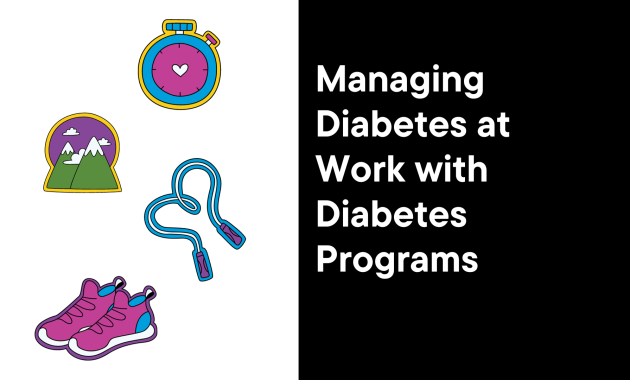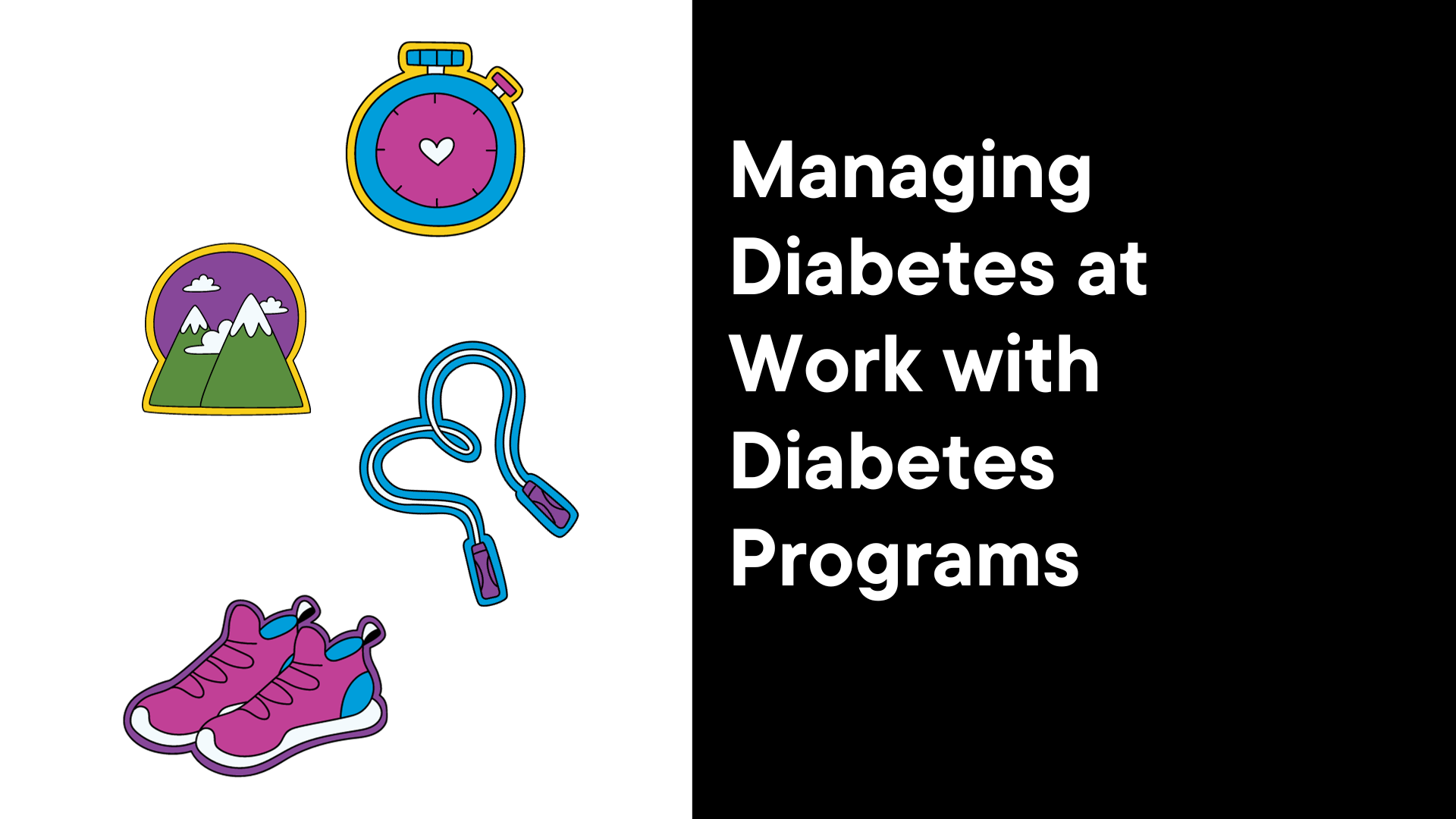
Diabetes at Work: Navigating Challenges and Boosting Productivity
The modern workplace presents a myriad of challenges, and for individuals managing diabetes, these challenges can be amplified. Maintaining consistent productivity while juggling blood sugar levels, medication schedules, and potential health complications requires a proactive and informed approach. This article delves into the realities of diabetes at work, offering practical strategies and insights for individuals to thrive professionally without experiencing the disruptive “crash” often associated with fluctuating blood sugar levels. We will explore how to navigate the complexities of diabetes at work, ensuring a fulfilling and productive career.
Understanding the Impact of Diabetes in the Workplace
Diabetes, a chronic metabolic disorder, affects millions worldwide. Its impact extends far beyond personal health, permeating various aspects of life, including the workplace. The unpredictable nature of blood sugar levels can lead to periods of both hyperglycemia (high blood sugar) and hypoglycemia (low blood sugar), causing a range of symptoms that can significantly impair performance and well-being. These symptoms include fatigue, difficulty concentrating, irritability, and in severe cases, loss of consciousness.
Diabetes at work can manifest in several ways. For instance, the demands of a high-pressure job can exacerbate stress, which in turn can influence blood sugar levels. Shift work, with its irregular hours and disrupted sleep patterns, can also pose challenges to managing diabetes. Furthermore, the availability of healthy food options and opportunities for physical activity in the workplace can vary significantly, further complicating the task of maintaining optimal blood sugar control. The goal is to find the best way to manage diabetes at work.
Proactive Strategies for Managing Diabetes at Work
Successfully navigating diabetes at work requires a proactive and multifaceted approach. This involves a combination of self-management techniques, open communication with employers, and a supportive work environment.
Effective Self-Management Techniques
At the heart of managing diabetes at work lies diligent self-management. This includes:
- Regular Blood Sugar Monitoring: Frequent blood glucose checks are essential to identify trends and patterns in blood sugar levels. This information allows for timely adjustments to medication, diet, and exercise.
- Medication Management: Adhering to prescribed medication schedules is crucial. This may involve taking oral medications or administering insulin. It’s important to understand the timing and effects of medications to prevent blood sugar fluctuations.
- Balanced Diet: Eating a balanced diet with regular meals and snacks is essential to maintain stable blood sugar levels. This involves choosing foods with a low glycemic index, such as whole grains, fruits, vegetables, and lean proteins, while limiting processed foods, sugary drinks, and excessive carbohydrates.
- Physical Activity: Regular physical activity plays a vital role in improving insulin sensitivity and promoting overall health. Incorporating short walks, stretching breaks, or dedicated exercise sessions into the workday can be beneficial.
- Stress Management: Stress can significantly impact blood sugar levels. Practicing stress-reduction techniques such as deep breathing exercises, meditation, or mindfulness can help mitigate the negative effects of stress.
Open Communication with Employers
Open and honest communication with employers is paramount. While individuals are not always obligated to disclose their medical conditions, informing employers about diabetes can create a supportive work environment and facilitate necessary accommodations. This includes:
- Disclosure: Deciding when and how to disclose diabetes is a personal decision. However, informing employers can enable them to understand potential needs and provide necessary support.
- Accommodation Requests: Employers are legally obligated to provide reasonable accommodations to employees with disabilities, including diabetes. This may include allowing for regular breaks for blood sugar monitoring and medication, providing a private space for insulin injections, or offering flexible work schedules.
- Education: Educating colleagues and supervisors about diabetes can help dispel myths and misconceptions, fostering a more understanding and supportive work environment.
Creating a Supportive Work Environment
A supportive work environment is crucial for individuals managing diabetes. This involves:
- Workplace Policies: Employers should have policies in place that support employees with chronic conditions, including diabetes. This may include providing access to healthy food options, promoting physical activity, and offering flexible work arrangements.
- Employee Education: Educating all employees about diabetes can promote understanding and empathy, reducing stigma and discrimination.
- Emergency Preparedness: Having a plan in place for managing diabetes-related emergencies, such as hypoglycemia, is essential. This may include training designated employees on how to recognize and respond to low blood sugar symptoms.
Practical Tips for Sustained Productivity
Beyond the general strategies mentioned above, several practical tips can help individuals with diabetes at work maintain consistent productivity:
Planning and Preparation
Effective planning and preparation are essential for managing diabetes at work effectively. This includes:
- Meal Planning: Planning meals and snacks in advance ensures consistent access to healthy food options, preventing blood sugar fluctuations.
- Medication and Supply Organization: Organizing medications, insulin, glucose meters, and other supplies in a readily accessible location at work is crucial.
- Emergency Preparedness: Carrying a readily available source of fast-acting glucose, such as glucose tablets or juice, can quickly treat low blood sugar.
Time Management and Breaks
Strategic time management and taking regular breaks can improve productivity and support blood sugar control:
- Scheduled Breaks: Incorporating regular breaks for blood sugar monitoring, medication administration, and snacks can prevent blood sugar crashes.
- Task Prioritization: Prioritizing tasks and breaking down large projects into smaller, manageable steps can reduce stress and improve focus.
- Time Blocking: Allocating specific time blocks for important tasks can improve efficiency and reduce distractions.
Utilizing Technology and Resources
Leveraging available technology and resources can streamline diabetes management and improve productivity:
- Glucose Monitoring Apps: Using glucose monitoring apps can track blood sugar levels, medication schedules, and food intake, providing valuable insights into blood sugar patterns.
- Online Resources and Support Groups: Accessing online resources, such as diabetes education websites and support groups, can provide valuable information, advice, and emotional support.
- Professional Support: Consulting with a healthcare team, including a diabetes educator, endocrinologist, and registered dietitian, can provide personalized guidance and support.
Addressing Challenges and Overcoming Setbacks
Despite careful planning and management, setbacks may occur. Learning to address challenges and overcome setbacks is crucial for long-term success. This involves:
Recognizing and Responding to Symptoms
Promptly recognizing and responding to symptoms of both hypoglycemia and hyperglycemia is essential. This includes:
- Hypoglycemia (Low Blood Sugar): Recognizing symptoms such as shakiness, sweating, confusion, and hunger, and promptly treating low blood sugar with fast-acting glucose.
- Hyperglycemia (High Blood Sugar): Recognizing symptoms such as increased thirst, frequent urination, and fatigue, and seeking medical attention if blood sugar levels remain elevated.
Adjusting Management Strategies
Being prepared to adjust management strategies as needed is critical. This includes:
- Medication Adjustments: Consulting with a healthcare provider to adjust medication dosages or schedules based on blood sugar patterns.
- Dietary Modifications: Making adjustments to meal plans and snack choices based on blood sugar responses.
- Exercise Modifications: Modifying exercise routines based on blood sugar levels and overall health.
Seeking Professional Support
Don’t hesitate to seek professional support when needed. This includes:
- Healthcare Professionals: Regularly consulting with healthcare professionals for guidance, support, and medical adjustments.
- Mental Health Professionals: Seeking help from a mental health professional to address stress, anxiety, or depression related to diabetes management.
- Support Groups: Joining diabetes support groups to connect with others who understand the challenges of living with diabetes.
The Future of Diabetes Management at Work
The future of diabetes at work looks promising, with ongoing advancements in technology and treatment options. Continuous glucose monitoring (CGM) systems are becoming increasingly sophisticated, providing real-time blood sugar data and alerts. Insulin pumps are becoming more user-friendly and integrated with CGM systems, allowing for personalized insulin delivery. Telehealth and remote monitoring are also expanding access to diabetes care, particularly for individuals in remote areas or with limited access to healthcare providers.
As the world becomes more aware of the challenges faced by individuals with diabetes, there is a growing emphasis on creating inclusive and supportive workplaces. Employers are increasingly recognizing the importance of providing accommodations and promoting employee well-being. Educational programs and resources are becoming more widely available, empowering individuals with diabetes to take control of their health and thrive professionally. This is about successfully managing diabetes at work.
Conclusion: Empowering Productivity with Diabetes
Managing diabetes at work requires a proactive and informed approach. By implementing the strategies outlined in this article, individuals can effectively navigate the challenges of diabetes, maintain consistent productivity, and achieve their professional goals. Open communication, self-management, and a supportive work environment are key to success. With the right tools, knowledge, and support, individuals with diabetes can thrive in the workplace, demonstrating that diabetes does not have to be a barrier to success. Remember, with the right strategies, it is possible to achieve a fulfilling and productive career while effectively managing diabetes. The goal is to make diabetes at work a manageable condition.
[See also: Related Article Titles]

